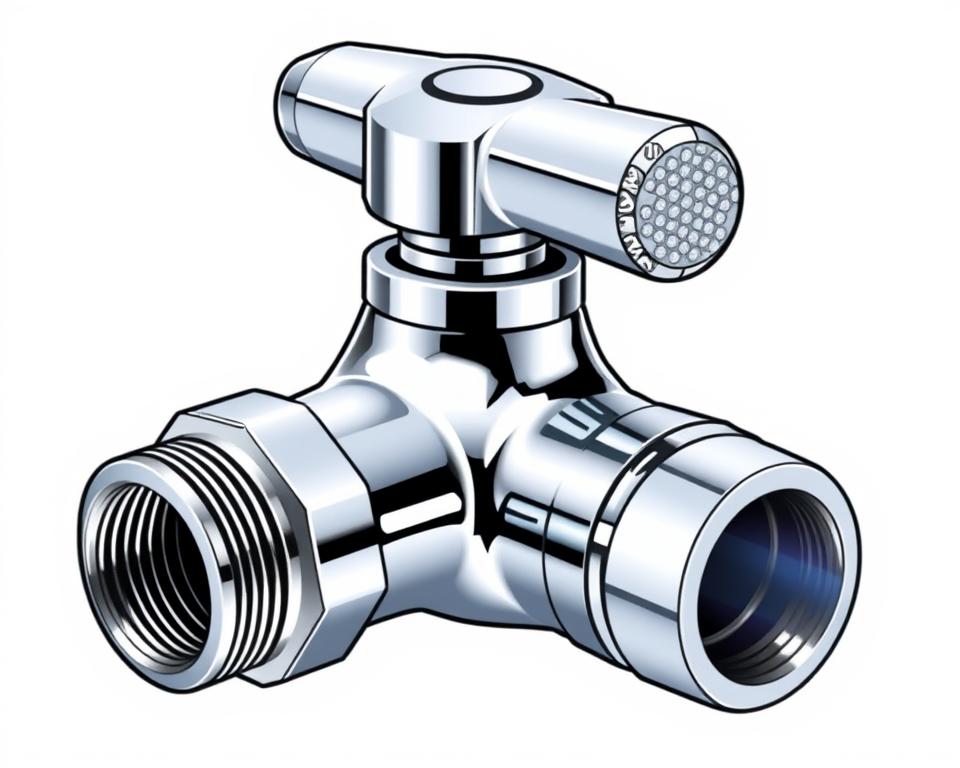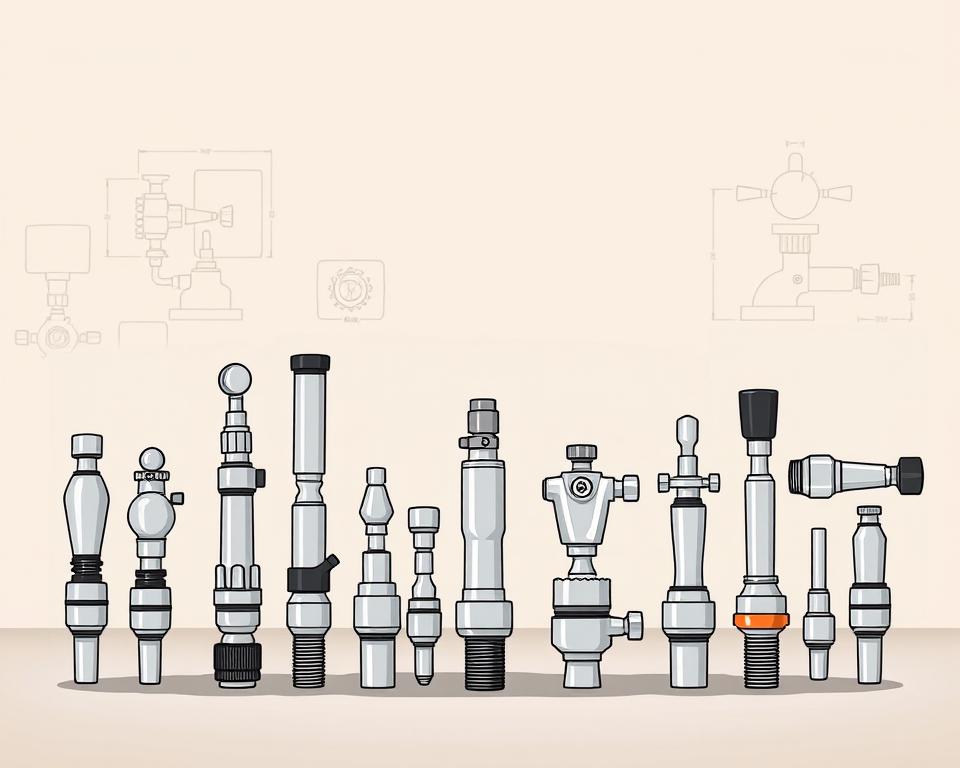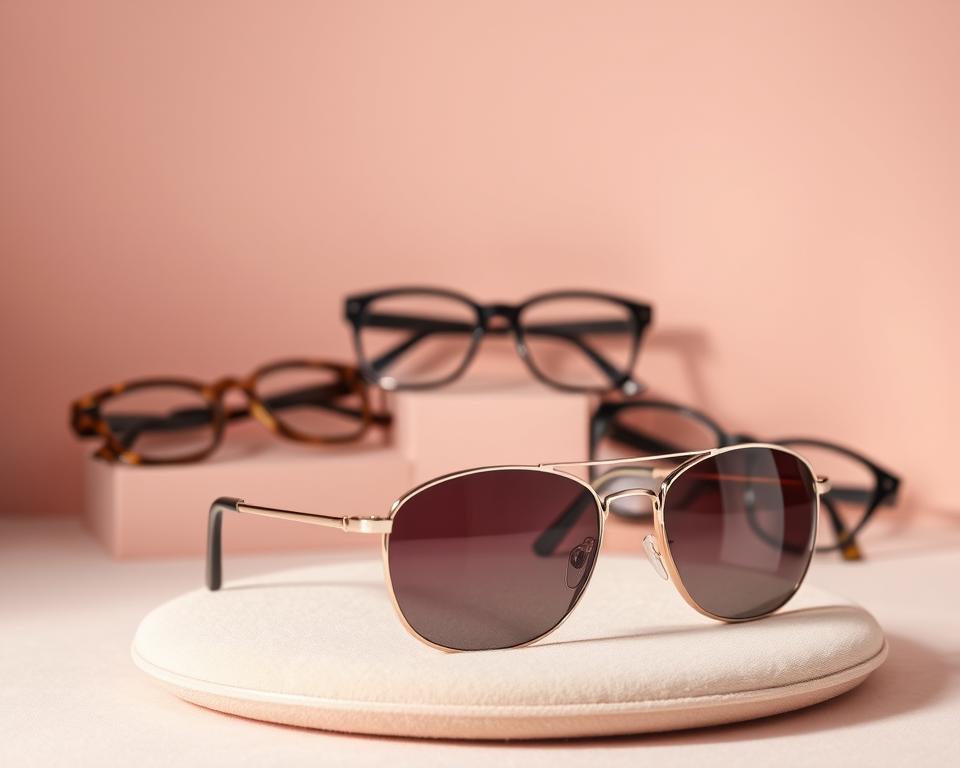Understanding Fiber Auxiliary Covering Lines
Did you know that more than 90% of international online data flow depends on fiber optic technology? This fact emphasizes the significance of every element in fiber optic cable fabrication, particularly the fiber secondary coating line. These setups are vital for ensuring the cables’ durability and performance.
This write-up will explore the complexities of fiber auxiliary coating systems. We will analyze their crucial function in shielding fiber optics. Moreover, we will examine how these processes improve cable durability and performance. This knowledge is vital for those working in SZ stranding line field and production.
Overview of Optical Fiber Technology
Fiber optic technology has changed data transmission, utilizing light signals over electronic signals. This technique ensures fast data transfer with negligible attenuation. At the center of this technology exist the basics of optical fiber communications. These basics are reinforced by a sophisticated design. It includes a nucleus, cladding, coating, support fibers, and a protective jacket. Each element is essential for the technique’s effectiveness.
The technique’s adoption into communication networks has transformed our communication landscape. It effectively handles vast amounts of data, facilitating online, voice services, and television channels. Therefore, optical fibers not only improves performance but also guarantees reliability worldwide.
Exploring Fiber Secondary Coating Line
A fiber auxiliary coating system is a collection of specific tools and operations. It adds protective layers to optical fibers after fabrication. This auxiliary layering is vital for the optical fibers’ strength and operation. It defends them from environmental and mechanical risks. The critical role of layers in maintaining fiber optics’ integrity is obvious.
Meaning and Relevance in Fiber Production
The auxiliary layering operation is critical in optical fiber production. It includes layering the optical strands with a plastic coat. This layer shields the strands during installation and operation. It increases the fibers’ lifespan by minimizing harm from bending, wearing, and contaminants.
Without these layers, optics would be prone to splitting and operational challenges. This process is essential for upholding the fiber’s resilience.
The Role of Layers in Safeguarding Fiber Strands
Coverings are key in preserving the optical and mechanical performance of optics. They act as a shield against mechanical pressure and environmental conditions. The significance of coverings is evident; they boost the optical fiber strength. This provides smoother installation and a extended lifespan.
This focus on secondary coating is vital for those in fiber optics. It’s a detail that greatly affects the optical fiber’s functionality and durability.
Parts of Fiber Secondary Covering Processes
The optical fiber auxiliary coating system is a intricate setup, including several essential components. These elements are crucial for producing premium outputs. They help us understand how a fiber secondary covering setup works and what it needs to run efficiently.
Main Equipment Overview
Key machines like optical fiber feeders, gel dispensers, coating machines, junction units, and cooling systems constitute the core of the auxiliary coating system. Each machine is crucial for the layering operation. For instance, the extruder liquefies the coating material, and the connection point coats it uniformly around the optic. These parts must work together to guarantee uninterrupted operation and item reliability.
Substances in Secondary Layering
The choice of substances for layering is vital for achieving the intended result. UV-set plastic materials are commonly chosen for their superior shielding properties. These materials protect the optic, enhance its longevity, and enhance total functionality. The appropriate combination of raw materials guarantees the end output adheres to industry standards and client demands.
Grasping the Secondary Layering Procedure
The secondary coating process is crucial in the fabrication of fiber optics, offering essential defense to the recently created strands. This process consists of the coating with defensive layers to improve the fiber strand’s strength and functionality. The schedule of this operation is essential; it provides ideal attachment, as a result minimizing material loss and enhancing production efficiency.
Fabricators use various coating technologies, including plastic coating and gel filling, to tailor particular covering characteristics and depths. Each technique offers unique benefits, appropriate for diverse strand operations and needs. As the requirement for top-notch fiber strands escalates, advancing the secondary layering procedure is crucial. It is vital for adhering to industry benchmarks and advancing coating technology.
Significance of the Draw Tower in Auxiliary Covering
The fiber draw tower is crucial in the fabrication of fiber optics. It pulls optics from preforms while applying protective coatings as they cool. The caliber of the drawing system is critical, affecting the layering’s success.
Operation of the Extraction Structure
The drawing system warms the preform before drawing the fiber at a regulated speed. This operation is vital for upholding the fiber’s structural integrity. As the fiber appears, coatings are added without delay for uniform protection against external and physical harm. The draw tower’s design ensures ideal covering placement timing and attachment.
Link Between Drawing System and Layering Effectiveness
The extraction structure’s standard directly influences the covering’s outcome. Inconsistencies in the extraction operation can result in inconsistent covering depth, impacting the fiber strand’s effectiveness. Superior drawing systems eradicate these problems. A consistent covering arrangement enhances physical strength, making the Optic fiber cable equipment more durable and useful in diverse operations.
Characteristics of High-Quality Secondary Coatings
Superior layers are vital for the performance and dependability of fiber optic arrangements. They must meet strict physical and light transmission benchmarks to ensure communication clarity. This understanding aids manufacturers in developing more dependable outputs.
Mechanical and Optical Performance Standards
Additional layers need to exhibit exceptional structural qualities. They must resist physical strain and preserve functionality across different external factors. This requires bonding strongly to the fiber’s core and preventing contraction or stretching. Additionally, they should enhance light transmission, enabling rapid communication with reduced data degradation.
Importance of Adhesion and Resistance to Delamination
Bonding of the covering to the glass core is vital for the technology’s strength. Without firm bonding, the likelihood of coating detachment grows, potentially causing failures. Superior layers are designed to prevent layer separation, ensuring longevity and reliability across diverse operations. This durability not only prolongs the fiber strand’s longevity but also enhances functionality, highlighting the importance of selecting superior coating materials.
Technology Behind Secondary Coating Lines
The evolution of secondary coating line technology is pushed by the pursuit of productivity and high-quality items. In the fiber optics market, the use of advanced covering tools is increasing. These developments include live tracking setups and enhanced extruder designs. Such systems facilitate producers to sustain high-quality standards while streamlining production processes.
Improvements in Secondary Layering Machinery
Recent advancements in secondary coating lines have transformed fabrication potential. New extruder systems now offer accurate regulation over the covering operation. This leads to enhanced regularity and effectiveness in the completed item. Robotization and advanced system combination further enable faster production cycles with reduced human intervention. This not only cuts down on faults but also improves general production.
Comparison of Different Secondary Coating Line Technologies
Juxtaposing multiple secondary layering methods is essential. Scalable arrangements shine for their flexibility and scalability. They permit fabricators to adjust to fluctuating production demands without large-scale setup alterations. In comparison, standard methods are recognized for their consistency and established performance. The selection of system hinges on a firm’s particular requirements, cost considerations, and manufacturing objectives.
Benefits of Auxiliary Covering Systems
Secondary coating lines bring many perks to manufacturers in the optical fiber sector. They improve the manufacturing operation, resulting in higher cost-effectiveness and better quality outputs.
Cost-Efficiency in Production
Secondary coating lines are key to lowering fabrication expenditures. They cut down on wastage and optimize processes, leading to major financial savings. This effectiveness boosts financial returns, making it vital for businesses aiming to stay competitive.
Improved Product Quality and Durability
Auxiliary covering systems also boost product quality. The durable coatings applied through these systems enhance the item strength of fiber optic cables. This translates to longer lifespan and reliability, ensuring better functionality and customer happiness.
Applications of Fiber Secondary Coating Lines
Optical fiber auxiliary covering systems are essential across different sectors, guaranteeing the reliability and performance of fiber optics. These optics are crucial in telecoms, building the base for fast online connectivity. They facilitate smooth communication, connecting consumers worldwide.
In the healthcare industry, these strands are vital for operational devices and diagnostic equipment. Their exactness and strength are essential for clinical operations. The uses of optical fiber auxiliary covering also reach into space and defense sectors, where they enhance communication systems and sensor technologies.
Consumer electronics reap advantages from the enhanced durability of these strands. They aid tools functioning in challenging settings. The flexibility of these fibers permits innovative solutions, making them crucial in today’s contemporary technological environment.
Influence of Secondary Layering on Fiber Strand Effectiveness
The secondary coating is essential for boosting fiber optic performance, concentrating on fiber durability and minor bending issues. A well-designed coating can significantly minimize minor optical fiber flaws that might lead to breakage under pressure.
Influence of Layers on Optic Resilience
The tensile strength of fiber strands is crucial for their consistency across multiple operations. Secondary coatings offer a protective layer that reduces strain, minimizing the chance of fracture. This protective layer guarantees that strands maintain their structural integrity under outside forces, ensuring consistent performance throughout their lifespan.
Microbending Performance and Its Importance
Minor bending issues can alter optical paths within fiber strands, resulting in communication issues. Powerful secondary layers mitigate these bending issues, providing fibers preserve their visual characteristics even in tough conditions. By lowering minor bending issues, manufacturers can guarantee fiber optic cables offer superior effectiveness and durability over time.
Sector Changes and Advancements in Secondary Layering
The fiber secondary coating sector is undergoing considerable transformations, motivated by the need for better performance and sustainability. This progress is driven by the fast-paced development of information exchange, increasing understanding of the importance of advanced materials and cutting-edge covering techniques. These trends highlight the importance of embracing cutting-edge materials and approaches in the layering sector.
Emerging Technologies in Coating Processes
Progress in layering techniques have resulted in the development of novel polymer materials. These substances offer superior mechanical properties and sustainability. Such developments not only enhance the resilience of optical fibers but also reduce the ecological impact. Moreover, enhanced manufacturing techniques provide greater accuracy in placement, causing steady item excellence.
Outlook for Auxiliary Covering Systems
The outlook for auxiliary covering systems is expected to feature the adoption of mechanization and intelligent tools. These advancements are anticipated to simplify manufacturing, cutting down on expenditures and enhancing product quality. As the industry progresses, the emphasis will remain on innovation and discovery. This will drive further innovations aimed at fulfilling the requirement for rapid communication and sustainability.
Challenges Faced in Fiber Optic Coating
The fabrication of fiber strand layers encounters many obstacles that affect production efficiency and output standards. A critical problem is the challenge of ensuring uniform covering depth across various fiber types. Such inconsistencies can lead to layering issues, impacting the fiber strands’ total effectiveness and dependability.
Maintaining firm attachment between the coating and the fiber is another vital obstacle. Weak bonding can lead to the coating to fail early, at the time of coating or subsequently. Moreover, pollutants in the covering procedure present major production obstacles. These contaminants can undermine the coating’s integrity and reliability. Manufacturers must balance adhering to strict environmental regulations with progress in fabrication to surmount these obstacles.
Conquering these obstacles is crucial to fulfill the rising sector expectations. It lays the foundation for enhanced strength and dependability in fiber strand operations.
Overview of Secondary Layering Processes
The recap of secondary layering processes emphasizes their vital function in creating dependable and top-notch fiber optics. These setups not only boost the physical strength and light transmission of optics but also defend them against environmental risks. This ensures the fiber strands stay durable over their functional period.
Developments in processes have taken the benefits of Fiber coloring machine to new heights. They boost fabrication effectiveness, reduce excess, and result in better output standards. The advancements facilitate firmer attachment and durability against problems such as layer separation, which significantly impacts effectiveness.
Grasping the significance of secondary layering processes helps those involved in the optical fiber industry make educated decisions. This knowledge causes better output standards and operational efficiencies. Such developments are vital in today’s competitive market.
Frequently Asked Questions
Definition of a fiber secondary coating line?
A fiber secondary coating line is a system created to add shielding coverings to optical fibers. This operation occurs after drawing, ensuring the fibers’ durability and performance.
Why is secondary layering essential in fiber strand fabrication?
The auxiliary covering operation is crucial. It protects the fiber strands against physical and external dangers. This boosts their durability and consistency, while preserving their light transmission qualities.
Primary parts of a secondary layering process?
Primary elements comprise optical fiber feeders, gel applicators, polymer applicators, connection points, and temperature control systems. These components function seamlessly to apply protective coatings to fiber optics.
What materials are typically used in the coating process?
Common materials include ultraviolet-hardened acrylic substances. These offer a shielding coat against wear from curving, scuffing, and impurities.
Impact of the drawing system on secondary layering?
The optical fiber drawing structure regulates the pulling of strands from initial shapes and adds shielding layers as they solidify. This substantially affects the layering standard.
What mechanical and optical performance standards do secondary coatings need to meet?
Auxiliary coverings must stick firmly to the optic’s center, prevent layer separation, and withstand physical stress. This enhances the tensile strength and light transmission of the optical fiber strands.
New developments in secondary layering processes?
Innovative techniques consist of advanced extruder systems and live tracking for ensuring standards. These advancements boost layering functionality and operational efficiency.
Benefits of auxiliary covering systems for producers?
Secondary coating lines result in cost efficiencies in production, improved product quality, minimized excess, and enhanced longevity and effectiveness of fiber optic cables.
In which industries are fiber secondary coating lines used?
These lines are used in telecommunications, healthcare, space exploration, and user-focused devices. They ensure durable optics for fast online connectivity and information hubs.
Effect of auxiliary coverings on fiber durability?
Auxiliary coverings defend tiny imperfections and minimize minor bending issues. This ensures the fibers retain their optical characteristics and operate steadily under different environments.
Obstacles in auxiliary covering production?
Producers encounter obstacles like achieving even layer dimensions, maintaining firm attachment, avoiding pollutants, and meeting environmental standards while advancing technology.
Future advancements in secondary layering sector?
The sector is projected to experience greater mechanization, smart technology integration, and improvements in synthetic substances. These should boost green practices and layering functionality.



